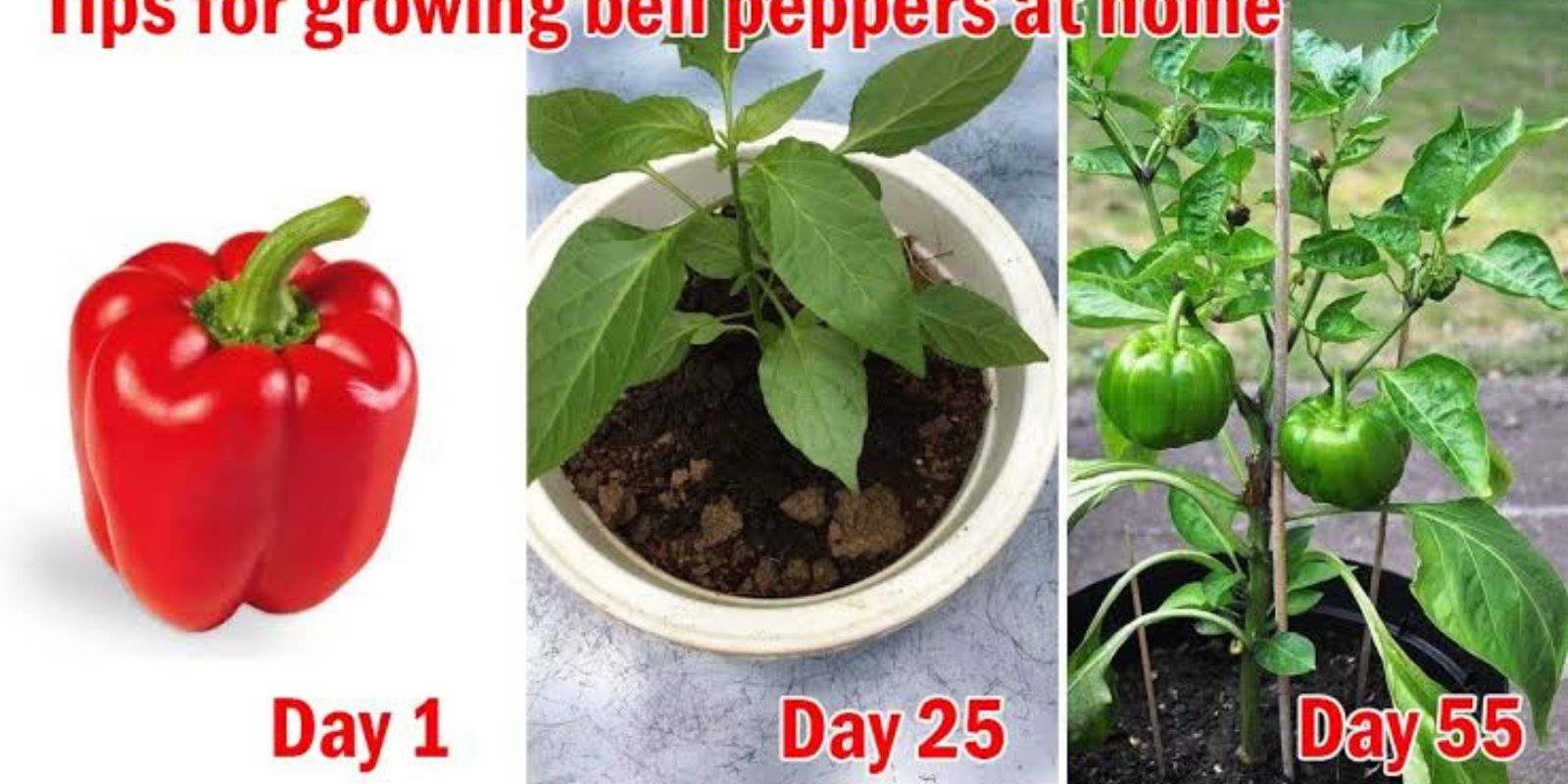Peppers are among the most rewarding crops to grow in your garden, whether you’re aiming for the crunch of sweet bell peppers or the fiery kick of hot chilies. With a little care, attention, and these 12 secrets, you can transform your pepper plants into prolific producers, delivering a steady supply of colorful, flavorful fruits throughout the season.
This comprehensive guide will cover everything you need to know about cultivating peppers successfully, from seed to harvest. Let’s dive into these tried-and-true techniques to help you grow perfect peppers in your garden.
1. Start with Healthy Seeds or Seedlings
The foundation of a successful pepper plant begins with selecting the right seeds or seedlings. Look for high-quality seeds from reputable sources. Opt for disease-resistant varieties suited to your climate and growing conditions. For beginners, sweet peppers are often easier to grow, while more experienced gardeners might try their hand at habaneros or other spicy varieties.
Pro Tip: Soak seeds overnight in warm water before planting to soften the seed coat and encourage faster germination.
2. Use the Right Soil
Peppers thrive in nutrient-rich, well-draining soil. Before planting, amend the soil with compost or well-rotted manure to provide a good balance of nutrients. The ideal soil pH for peppers is between 6.0 and 6.8. Conducting a soil test can ensure optimal conditions for growth.
If you’re planting in pots, use a high-quality potting mix specifically formulated for vegetables.
3. Plant at the Right Time
Timing is critical when growing peppers. They are warm-weather plants and do not tolerate frost. Wait until the soil temperature consistently reaches 60°F (15°C) or higher before planting outdoors. If starting from seed, sow them indoors 8-10 weeks before the last frost date in your area.
Transplant seedlings only after nighttime temperatures remain above 50°F (10°C).
4. Provide Plenty of Sunlight
Peppers are sun lovers! They need at least 6-8 hours of direct sunlight each day to thrive. Choose a sunny spot in your garden, or position containers where they receive ample light. Insufficient sunlight can lead to leggy plants and poor fruit production.
Pro Tip: In hot climates, a little afternoon shade can help protect plants from scorching.
5. Space Plants Properly
Overcrowding can lead to poor air circulation, increasing the risk of diseases like powdery mildew. Space plants 12-18 inches apart, depending on the variety, and leave 24-36 inches between rows. This allows room for growth and makes it easier to care for your plants.
6. Water Smartly
Peppers need consistent moisture to develop healthy roots and fruits, but overwatering can be just as harmful as underwatering. Water deeply, about 1-2 inches per week, and allow the soil to dry slightly between waterings.
When watering, avoid splashing the leaves, as this can promote fungal diseases. Drip irrigation systems or soaker hoses work well for peppers.
7. Mulch for Moisture Retention
Apply a layer of organic mulch, such as straw or wood chips, around your pepper plants. Mulch helps retain soil moisture, regulate temperature, and suppress weeds. It also creates a barrier that reduces soil-borne diseases from splashing onto leaves.
8. Fertilize Wisely
Peppers are heavy feeders and benefit from regular fertilization. Use a balanced fertilizer with a lower nitrogen content (e.g., 5-10-10). Too much nitrogen promotes leafy growth at the expense of fruit production.
Apply fertilizer at planting time, then feed plants every 2-4 weeks during the growing season. Compost tea or fish emulsion are excellent organic options.
9. Provide Support for Heavy Fruits
As your pepper plants mature and begin producing fruit, the branches can become weighed down, especially with larger varieties like bell peppers. Use stakes, cages, or trellises to support the plants and prevent branches from breaking.
Pro Tip: Start adding supports early in the growing season to avoid disturbing the roots later.
10. Prune for Health and Productivity
Pruning your pepper plants encourages better airflow and directs energy toward fruit production. Remove any yellowing or damaged leaves and trim suckers that grow between the main stem and branches.
For larger plants, consider topping the main stem early in the season to encourage bushier growth.
11. Manage Pests and Diseases
Peppers can fall victim to common pests like aphids, spider mites, and whiteflies, as well as diseases like blossom end rot and bacterial spot. Inspect plants regularly and act promptly to control infestations.
For pests, introduce beneficial insects like ladybugs or use organic solutions like neem oil. To prevent diseases, ensure proper spacing, avoid overwatering, and remove infected plants.
12. Harvest with Care
Peppers are ready to harvest when they reach their mature color and size. For sweet peppers, this could mean vibrant red, yellow, or orange hues, while hot peppers might turn deep red or purple.
Use scissors or pruning shears to cut peppers from the plant, leaving a small portion of the stem attached. Avoid pulling them off, as this can damage the plant.
Pro Tip: Harvesting regularly encourages the plant to produce more fruit throughout the season.
Conclusion: Enjoy the Fruits of Your Labor
With these 12 secrets, you’re well on your way to growing a bumper crop of peppers in your garden. Whether you’re a first-time gardener or a seasoned pro, the key to success lies in preparation, care, and patience.
By investing time and effort into your pepper plants, you’ll enjoy a continuous harvest of fresh, homegrown peppers that are bursting with flavor. So why not get started today? Your garden — and your taste buds — will thank you.
💬 Which of these tips will you try first? Share your thoughts and pepper-growing experiences in the comments below!

